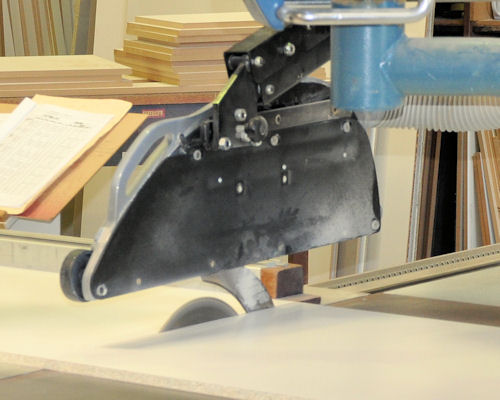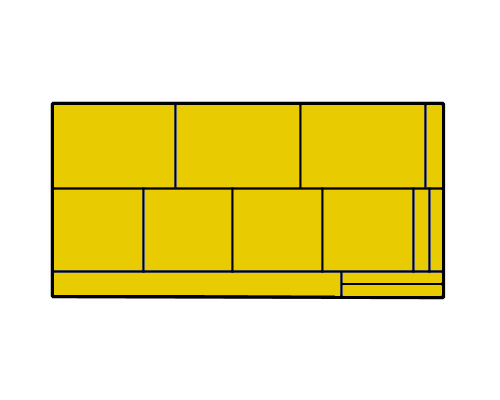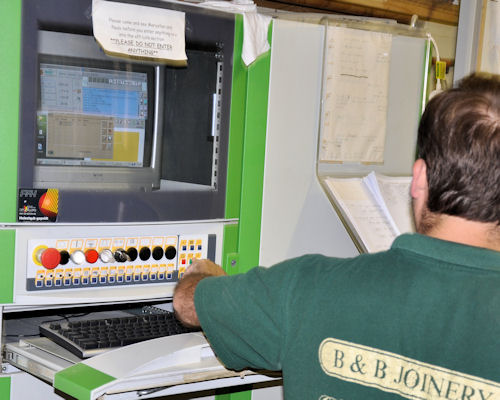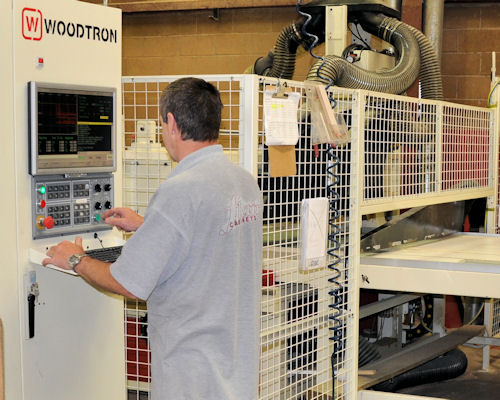Cutting lists
 Audio for slide 1 (mp3 |6|KB)
Audio for slide 1 (mp3 |6|KB)
A cutting list sets out the finished sizes of panels and components needed for a particular cabinet.
Depending on the type of equipment you use at work, you may refer to a hard copy cutting list or a computer-generated list on a screen.
The panels are cut from large sheets in a pattern that minimises the amount of waste generated.

Depending on the type of equipment you use at work, you may refer to a hard copy cutting list or a computer-generated list on a screen.
The panels are cut from large sheets in a pattern that minimises the amount of waste generated.

 Audio for slide 2 (mp3 |6|KB)
Audio for slide 2 (mp3 |6|KB)
If you were to draw up a cutting pattern by hand, you would start with the largest panels and then use the offcuts to recover the smaller panels and components.
You need to take into account the direction of the grain if the panels are timber veneered, so that they all match when they're cut.
The same applies to patterned laminates.

You need to take into account the direction of the grain if the panels are timber veneered, so that they all match when they're cut.
The same applies to patterned laminates.

 Audio for slide 4 (mp3 |6|KB)
Audio for slide 4 (mp3 |6|KB)
Optimising software is used to produce cutting patterns on a computer.
The software program 'optimises' the recovery from each sheet by calculating the most efficient combination of panels and components to cut from each one.
It can also specify the sheet sizes that will produce the least amount of waste and calculate costs and percentages.

The software program 'optimises' the recovery from each sheet by calculating the most efficient combination of panels and components to cut from each one.
It can also specify the sheet sizes that will produce the least amount of waste and calculate costs and percentages.


Learning activity
Audio 6 (mp3 |6|KB)You may use several types of cutting lists at work, depending on the sort of job you're doing or the type of saw you're using. Choose one example of a cutting list and answer the following questions.
Share your answers with your trainer and other learners in your group.
- Name the type of job that the cutting list relates to (e.g. kitchen cabinets carcases, etc.)
- What type of saw will be used to cut up the materials shown on the list?
- Is the list printed out in hard copy or displayed on a computer screen (or both)?
- Write down each of the column headings shown in the list and describe the purpose of each column.

 Go to Quality checks
Go to Quality checks
